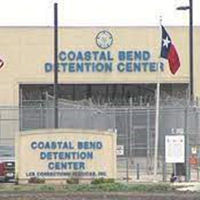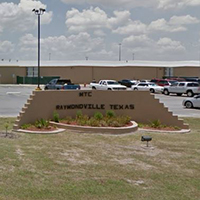Everything You Need to Know About Immigration Bonds
Everything You Need to Know About Immigration Bonds. Immigration bonds allow detained individuals to be released while their cases are being processed. In this detailed guide, we will explain immigration bonds, who qualifies for them, how to pay for them, and what happens if the bond conditions are not met.
What is an Immigration Bond?
An immigration bond guarantees the U.S. government that a detained individual will comply with all immigration-related court requirements and appear for scheduled hearings. Once the bond is paid, the individual can be released from custody while their case proceeds. If they meet all the conditions, the bond can be refunded.
Types of Immigration Bonds
There are two main types of immigration bonds:
- Delivery Bond: This bond allows the detainee to be released, provided they attend all court hearings and comply with legal orders. Failure to do so will result in the forfeiture of the bond.
- Voluntary Departure Bond: This bond is issued when a detainee agrees to leave the U.S. voluntarily within a specific timeframe. The bond is refunded once the individual has left the country, but failure to depart results in forfeiture.
Who is Eligible for an Immigration Bond?
Not every detainee qualifies for an immigration bond. Eligibility is determined by the Immigration and Customs Enforcement (ICE) or an immigration judge based on the detainee’s:
- Criminal record
- Risk of flight
- Family and community ties in the U.S.
- Potential threat to public safety
Individuals with serious criminal histories or those deemed likely to evade court appearances may be denied bond.
Steps to Secure an Immigration Bond
- Determining Eligibility
The first step is to assess whether ICE will grant a bond—everything You Need about Immigration Bonds. - Bond Hearing
During this hearing, the detainee’s attorney will present evidence that the individual is not a flight risk or a danger to the community. If the bond is granted, the judge will then decide the amount. - Paying the Bond
Only a U.S. citizen or legal permanent resident can pay the bond. It must be paid in full or by using a bail bonds company like Speedy Immigration Bail Bonds, typically between $1,500 and $25,000, depending on various risk factors. Payments must be made at a designated ICE office. - Release of the Detainee
Once the bond is paid, the detainee will be released, subject to compliance with all legal requirements and court appearances.
What Happens if Bond Conditions Are Violated?
If the individual fails to attend a court hearing or does not comply with the bond conditions, the bond is forfeited, meaning the government keeps the total amount. ICE may also issue a new detention order for the individual.
The Role of an Immigration Attorney
Everything You Need to Know About Immigration Bonds. An attorney can:
- Evaluate the detainee’s eligibility for bond
- Represent the detainee in bond hearings
- Ensure that all legal deadlines and requirements are met
An experienced attorney can also help explore other options for avoiding deportation and keeping families together during the immigration process.
Common Questions About Immigration Bonds
- What if I Can’t Pay the Full Bond Amount?
Several immigration bond agencies offer services to post bond on behalf of the detainee. These agencies typically charge a fee for this service, which varies by agency. - Can I Get the Bond Money Back?
If the individual complies with all court appearances and legal obligations, the bond will be refunded after the case is resolved. However, if the individual fails to comply, the bond is forfeited, and the money is not refunded. - Can I Appeal a Denied Bond Request?
Everything You Need to Know About Immigration Bonds. “Common Questions About Immigration Bonds - What if I Can’t Pay the Full Bond Amount?
If you cannot pay the full bond amount, there are immigration bond agencies, ” Speedy Immigration Bail Bonds,” that can post the bond on your behalf for a fee. - Can I Get the Bond Money Back?
If you attend all court appearances and fulfill your legal obligations, the bond will be refunded after your case is resolved. However, if you fail to comply, the bond is forfeited, and the money is not refunded. - Can I Appeal a Denied Bond Request?
Everything You Need to Know About Immigration Bonds.
Fianzas de Inmigración: Todo lo que Necesita Saber.
Las fianzas de inmigración son fundamentales para el proceso de detención y liberación de personas que han sido detenidas por violaciones a las leyes de inmigración en los Estados Unidos. En este artículo completo, explicaremos cómo funcionan las fianzas de inmigración, quién es elegible para solicitarlas y los pasos necesarios para obtener la liberación de un ser querido de la custodia de inmigración.
¿Qué es una fianza de inmigración?
Una fianza de inmigración es una suma de dinero requerida por el gobierno federal para garantizar que una persona detenida por el Servicio de Inmigración y Control de Aduanas (ICE) cumpla con sus obligaciones legales, como comparecer ante el tribunal de inmigración según sea necesario. Este dinero se paga para asegurar la libertad condicional de la persona mientras se resuelve su caso de inmigración.
Tipos de fianzas de inmigración
Existen dos tipos principales de fianzas de inmigración:
- Fianza de entrega: esta fianza permite la liberación de la persona detenida con la condición de que asista a todas las audiencias y procedimientos legales ante el tribunal de inmigración.
- Fianza de salida voluntaria: Este tipo de fianza se otorga cuando la persona detenida acepta salir de los Estados Unidos voluntariamente dentro de un plazo específico. El monto de la fianza es reembolsable una vez que se confirma la salida.
¿Quién califica para una fianza de inmigración?
No todas las personas detenidas por ICE califican automáticamente para una fianza de inmigración. El juez de inmigración o ICE evalúa factores como los antecedentes penales del detenido, el riesgo de no presentarse ante el tribunal, el estado familiar y laboral en los EE. UU. y las posibles amenazas a la seguridad pública. Aquellos con antecedentes penales graves o considerados un riesgo de fuga pueden no ser elegibles para una fianza de inmigración.
Proceso para solicitar una fianza de inmigración
- Determinación de elegibilidad: ICE primero determinará si el detenido es elegible para una fianza. Si ICE no ofrece una fianza, el abogado de inmigración del detenido puede solicitar una audiencia ante un juez de inmigración.
- Audiencia de fianza: Durante la audiencia, el abogado del detenido puede argumentar por qué se le debe conceder la libertad bajo fianza a su cliente, presentando evidencia de que el detenido no representa un riesgo de fuga o una amenaza para la seguridad pública.
- Pago de la fianza: Si se concede la fianza, debe pagarse en su totalidad. Solo un ciudadano estadounidense o residente legal puede realizar el pago, y debe hacerse en una oficina autorizada de ICE o con una compania de fianzas como Speedy Immigration Bail Bonds . El monto varía, pero generalmente es entre $1,500 y $25,000, según los factores de riesgo.
- Liberación del detenido: Una vez pagada la fianza, el detenido será liberado bajo libertad condicional y deberá cumplir con todas las condiciones impuestas, incluida la asistencia a las audiencias del tribunal de inmigración.
¿Qué sucede si no se cumplen las condiciones de la fianza?
Si la persona liberada bajo fianza no se presenta ante el tribunal o viola alguna de las condiciones impuestas, la fianza se pierde y el gobierno retiene el dinero. Además, ICE puede emitir una nueva orden de detención y deportación.
Importancia de contratar a un abogado de inmigración
Es fundamental buscar el asesoramiento de un abogado de inmigración experto, ya que puede:
Evaluar la elegibilidad del detenido para la fianza.
Representar al detenido en la audiencia de fianza.
Asegurarse de que se cumplan todos los plazos y requisitos legales.
Además, un abogado puede brindar orientación sobre las mejores opciones para evitar la deportación y mantener unida a la familia.
Aquí están las preguntas frecuentes revisadas sobre fianzas de inmigración:
- ¿Qué pasa si no puedo pagar la fianza completa?
Si no puede pagar la fianza completa, existen agencias de fianzas de inmigración que ofrecen servicios de fiador para pagar la fianza en su nombre por una tarifa. Es importante investigar y seleccionar una agencia con buena reputación.
- ¿Es posible recuperar el dinero de la fianza?
Si la persona cumple con todas las condiciones impuestas y asiste a todas las audiencias, el dinero de la fianza se reembolsará una vez que se haya resuelto el caso. Sin embargo, si la persona no cumple, la fianza se perderá.
- ¿Puedo apelar una decisión negativa sobre la fianza?
Sí, si el juez niega la fianza, su abogado puede apelar la decisión ante un tribunal de inmigración superior.
How to Secure the Release of a Relative from Immigration Detention Through Bond
How to Securing a relative’s release from immigration detention through bond can be complex and stressful. A crucial part of this process is paying a bond, which allows the detainee to be released while their case is pending.
What is an Immigration Bond?
An immigration bond is a financial guarantee provided to the U.S. government, ensuring that the individual released from detention will appear for all scheduled immigration court hearings. Failure to appear results in forfeiture of the bond and the individual may be subject to further detention or deportation.
There are two main types of immigration bonds:
- Delivery Bond (I-352): This bond allows the detainee to be released from custody while they await their court hearing. The individual promises to attend all court proceedings by posting a delivery bond.
- Voluntary Departure Bond: This bond allows a detained person to leave the U.S. voluntarily rather than being forcibly removed. The bond amount will be refunded if the individual departs the U.S. within the agreed time frame.
Who Qualifies for an Immigration Bond?
How to Secure the Release of a Relative from Immigration Detention Through Bond. Eligibility depends on the following factors:
- Nature of the Offense: If the detainee has been convicted of serious crimes such as aggravated felonies, they may be considered a flight risk or a danger to the community, making them ineligible for bond.
- Immigration Status: Individuals facing specific deportation orders, such as those with final removal orders, are often ineligible for release on bond.
- Flight Risk: A judge will assess the likelihood of the detainee absconding before their court date. Ties to the community, such as employment, family in the U.S., and length of residence, can positively influence the bond decision.
How is the Immigration Bond Amount Determined?
The amount of the immigration bond is determined by several factors, including:
- Risk of Flight: The higher the risk that the detainee will not appear for future hearings, the higher the bond amount will likely be.
- Criminal History: A record of prior convictions or ongoing criminal cases can increase the bond amount or result in bond denial.
- Financial Ability: The court considers the detainee’s economic status. The minimum amount for a delivery bond is typically $1,500, but it can reach upwards of $20,000 depending on the case specifics.
The Immigration Bond Hearing
After an individual is detained by Immigration and Customs Enforcement (ICE), they will have the opportunity for a bond hearing before an immigration judge. At this hearing, the judge will evaluate whether the detainee qualifies for release on bond and set the amount if applicable. Community ties, employment, and family situations are crucial in the judge’s decision.
Key Steps at the Bond Hearing:
- How to Secure the Release of a Relative from Immigration Detention Through Bond. Attorneys can present evidence supporting the detainee’s character, ties to the community, and commitment to attending future hearings.
- Document Submission: The detainee (or their attorney) should provide documentation demonstrating they are not a flight risk or a danger to the community. This may include proof of employment, letters of support from family and community members, and records showing a clean criminal history.
- Judge’s Decision: The judge will approve or deny the bond based on the evidence. The bond amount will be set if approved, and the detainee can be released upon payment.
How to Pay the Immigration Bond
Once the bond is set, paying it promptly is essential for securing your relative’s release. The bond must be paid immediately — pay speedy immigration bail bonds. Here’s how the process works:
- Who Can Pay the Bond? Any U.S. citizen or lawful permanent resident can pay the bond on behalf of the detainee. The person paying the bond is known as the “obligor.”
- Where to Pay: Bonds can be paid at any ICE-ERO (Enforcement and Removal Operations) office that accepts bond payments using a bail bond company, such as speedy immigration bail bonds. It is advisable to call ahead to ensure the office accepts payments, as not all offices handle bonds.
- Method of Payment: Bond payments must be made via cashier’s check or money order, or you can pay via credit, debit, or Zelle for speedy immigration bail bonds..S. postal money order to the “U.S. Department of Homeland Security.” You could also pay them cash credit using an immigration bail bonds company. Call us to ask for other forms of payment.
Comprehensive Guide to Immigration Bonds: Everything You Need to Know.
Understanding Immigration Bonds
Immigration bonds are financial guarantees that an individual in immigration detention will appear for all scheduled hearings and comply with the removal process if ordered. These bonds are crucial in the immigration system, offering a means for detainees to be released from custody while awaiting their court proceedings.
Types of Immigration Bonds
There are two primary types of immigration bonds:
- Delivery Bond: This bond allows the detainee to be released from detention to spend time with family and obtain legal assistance. If applicable, the detainee must attend all court hearings and comply with the final removal decision.
- Voluntary Departure Bond: This bond is paid to ensure that the detainee voluntarily leaves the country within a specified time frame. If the individual leaves as agreed, the bond is refunded; if not, the bond is forfeited.
Eligibility Criteria for Immigration Bonds
To be eligible for an immigration bond, the detainee must not threaten national security or public safety and must not have committed certain crimes. An immigration judge or, in some cases, an ICE (Immigration and Customs Enforcement) officer decides on bond eligibility.
How Immigration Bonds Work
Setting the Bond Amount
The bond amount is typically determined by an immigration judge during a bond hearing.. Factors influencing the bond amount include:
- Flight risk: Likelihood of the detainee appearing for future court dates.
- Community ties: Family connections, employment status, and length of residence in the U.S.
- Criminal history: Previous convictions or pending charges.
Paying the Bond
Anyone, including friends, family, or professional bond agents, can pay the bond. The payment must be made in full to ICE by cashier’s check, money order, certified check, or Cebonds.
Refund of the Bond
If the detainee complies with all court hearings and the final decision, the bond amount is refunded after the case concludes—non-compliance or failure to appear in court results in bond forfeiture.
Role of Immigration Bond Agents
Immigration bond agents, or bail bond agents, play a pivotal role in facilitating the release of detainees. Comprehensive Guide to Immigration Bonds. They also ensure that the detainee adheres to the bond conditions.
Legal Representation and Immigration Bonds
Having legal representation can significantly impact the bond process. Guide to Immigration Bonds: Everything You Need to Know..
The Bond Hearing Process
The bond hearing is a critical component of the immigration bond process.. During this hearing, an immigration judge evaluates the detainee’s case and determines eligibility and bond amount based on the factors mentioned earlier..
Factors Influencing Immigration Bond Decisions
Flight Risk
Flight risk is a primary consideration when setting the bond amount. Judges assess the likelihood that the detainee will abscond based on factors such as:
- Family ties: Strong family connections may reduce perceived flight risk.
- Employment: A stable employment history can positively influence the judge’s decision.
- Community involvement: Active participation in community organizations can be beneficial.
Criminal History
A detainee’s criminal record is scrutinized during the bond hearing. Non-violent offenders with minor infractions are more likely to receive favorable bond conditions than those with serious criminal histories.
Posting Immigration Bonds
Friends and Family
Friends or family members can post the bond by visiting the local ICE office. They must provide the detainee’s full name, alien registration number (A-number), and the bond amount.
Professional Bond Agents
Professional bond agents are an alternative for those unable to pay the bond upfront. These agents charge a non-refundable fee, usually around 15-20% of the bond amount, and handle the posting process.
Compliance and Conditions of Release
Upon release, the detainee must adhere to the conditions set forth by the court, including:
- Regular check-ins with ICE: Periodic reporting to local ICE offices.
- Electronic monitoring: Wearing an ankle bracelet if mandated.
- Travel restrictions: Remaining within designated areas.
Conclusion
Understanding the intricacies of immigration bonds is essential for detainees and their families navigating the U.S. immigration system. By comprehending the types of bonds, eligibility criteria, payment processes, and the roles of bond agents and attorneys, individuals can better manage their legal proceedings and secure the release of their loved ones. Comprehensive Guide to Immigration Bonds: Everything You Need to Know..
Houston Immigration Bonds
Understanding Immigration Bonds
Houston Immigration bonds are critical in ensuring the release of individuals detained by U.S. Immigration and Customs Enforcement (ICE) while awaiting immigration court hearings. These bonds guarantee that the detainee will attend all court proceedings and comply with the immigration judge’s final decision. In Houston, Texas, understanding the nuances of immigration bonds can make a significant difference in the process.
Types of Immigration Bonds
Delivery Bond (Form I-352)
A delivery bond ensures a detainee will appear for all scheduled immigration hearings. The detainee must receive a notice of custody conditions to obtain a delivery bond from ICE. This bond is typically set by an immigration judge or ICE. The amount varies depending on several factors, including the detainee’s immigration status, criminal history, and flight risk.
Voluntary Departure Bond
This bond allows a detainee to leave the United States voluntarily at their own expense within a specified time frame. The bond amount is forfeited if the detainee fails to leave the country. However, the bond amount is refunded if the departure is within the stipulated period.
Setting the Bond Amount
The bond amount can vary widely based on individual circumstances. Factors influencing the bond amount include:
Risk of Flight: Higher flight risks generally result in higher bond amounts.
Criminal History: Individuals with a criminal record may face higher bond amounts.
Family and Community Ties: Strong ties to the community can lead to lower bond amounts.
Houston Immigration Bonds.
Houston Immigration Bonds
Requesting a Bond Hearing
If ICE does not grant bonds to detainees, they can request a bond hearing. The request must be submitted to an immigration judge, who will then schedule a hearing to determine eligibility and set the bond amount.
Factors Considered by the Judge
During the bond hearing, the immigration judge considers several factors:
Nature of Offense: The severity and nature of any criminal offenses.
Family Ties: Strong family connections in the U.S. may favor bond approval.
Employment: Employment history and potential for future jobs.
Residency Duration: Length of time spent residing in the United States.
Community Involvement: Participation in community activities and organizations.
Posting the Bond
Once the bond amount is set, it can be posted by anyone with lawful status in the United States. The bond can be posted through:
Surety Bond: Posted through a bondsman or a bonding company. This usually involves a fee, typically a percentage of the total bond amount.
Cash Bond: The full amount of the bond is paid directly to ICE. This amount is refundable if all court appearances are made and all terms are complied with.
Steps to Post a Cash Bond
Identify the Bonded Individual: Obtain the detainee’s full name and A-number (Alien Registration Number).
Locate the ICE Office: Identify the appropriate ICE office where the bond can be posted.
Make the Payment: Pay the bond amount at the specified ICE office. Payments can typically be made via cashier’s check or money order.
Receive the Bond Receipt: A receipt is issued upon payment, which must be kept for future reference.
Legal Assistance and Support
Navigating the complexities of immigration bonds can be challenging. Legal assistance can provide invaluable support throughout the process. Immigration attorneys can:
Assess Eligibility: Determine the likelihood of bond approval.
Prepare Documentation: Assist in gathering necessary documents and evidence.
Representation at Hearings: Represent the detainee during bond hearings.
Advocacy: Advocate for a reasonable bond amount and favorable conditions.
Speedy Immigration Bail Bonds are here to assist you at any immigration detention center in the USA.

400 2nd Street
Anson, TX 79501
United States

4909 Farm to Market Road
Robstown, TX 78380
United States
(361) 767-3400

CoreCivic Laredo Processing Center
4702 East Saunders
Laredo, TX 78401
United States
CoreCivic Laredo Processing Center

CoreCivic Webb County Detention Center
9998 S. Highway 83
Laredo, TX 78046
United States
CoreCivic Webb County Detention Center

1300 E Hwy 107
La Villa, TX 78562
United States

704 E Broadway Street
Eden, TX 76837
United States

El Paso Service Processing Center
8915 Montana Avenue
El Paso, TX 79925
United States
El Paso Service Processing Center

1800 Industrial Drive
Raymondville, TX 78580
United States

Houston Contract Detention Facility
15850 Export Plaza Drive
Houston, TX 77032
United States
Houston Contract Detention Facility

IAH Polk Adult Detention Facility
3400 FM 350 South
Livingston, TX 77351
United States
IAH Polk Adult Detention Facility

500 Hilbig Road
Conroe, TX 77301
United States

Karnes County Immigration Processing Center
409 FM 1144
Karnes City, TX 78118
United States
Karnes County Immigration Processing Center

Limestone County Detention Center
910 North Tyus Street
Groesbeck, TX 76642
United States
Limestone County Detention Center

806 Hilbig Road
Conroe, TX 77301
United States

Port Isabel Service Processing Center
27991 Buena Vista Blvd.
Los Fresnos, TX 78566
United States
Port Isabel Service Processing Center

Prairieland Detention Facility
1209 Sunflower Lane
Alvarado, TX 76009
United States
Prairieland Detention Facility

1001 San Rio Blvd
Laredo, TX 78046
United States

Rolling Plains Detention Center
118 County Road 206
Haskell, TX 79521
United States
Rolling Plains Detention Center

South Texas Family Residential Center
300 El Rancho Way
Dilley, TX 78017
United States
South Texas Family Residential Center

South Texas ICE Processing Center
566 Veterans Drive
Pearsall, TX 78061
United States
South Texas ICE Processing Center





